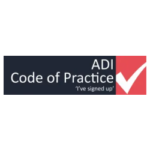Accessibility Policy
We want everyone who visits our site to feel welcome and to find the experience rewarding. We have tried extremely hard to ensure that this website is accessible to everybody regardless of ability.
If you have any difficulty using our site, or would like to share your experiences, please contact us.
KWIK PASS Driver Training
- 75a Crawley Road, Luton, Bedfordshire, LU1 1HX
- 079 666 777 77
- info@kwikpass.org
We want everyone who visits our site to feel welcome and to find the experience rewarding. We have tried extremely hard to ensure that this website is accessible to everybody regardless of ability. If you have any difficulty using our site, or would like to share your experiences, please contact us.
Standards compliance
- All pages on this site are designed to follow the accessibility guidelines as set out by the W3C Web Content Accessibility Guidelines 2.0.
- The guidelines have three levels of accessibility (A, AA and AAA). We’ve chosen Level A as the target for our website. This isn’t because we lack ambition, but because in terms of accessibility machines can only test for so much – we also rely upon people using our site to tell us if something doesn’t work with their particular condition or equipment.
- All pages on this site validate as HTML5 using the W3C Nu Markup Validation Service.
- All pages on this site use structured semantic markup. H1 tags are used for page and appropriate HTML5 section titles and H2 tags are used for subtitles.
Structural Markup
Web pages on this website include five different areas:
- A header bar
- Primary navigation
- A main content area
- On some pages, a sidebar
- A footer, which includes secondary navigation
When CSS is disabled (or when using a screen reader), these areas are read in the above order.
Images
- Unless they are purely decorative items, all images used on this web site have descriptive alt attribute content.
- Our site content is accessible with images turned off.
- The main navigation bar on this site uses only CSS for styling and degrades gracefully for non–visual browsers.
Links
- Some links have title attributes which describe the link in greater detail, unless the text of the link already fully describes the target.
- Links are written to make sense out of context.
- Permanent URLs are used whenever possible.
Forms
- Where used, all form controls are appropriately and explicitly labelled.
- We provide an email address and a telephone number as an alternative to our contact form.
- Submitted form data validation doesn’t rely upon client–side scripting.
Scripts
- This site uses non-obtrusive client-side scripting.
- The content of this website is accessible without JavaScript support.
Visual Design
- This site solely uses cascading style sheets to provide visual layout.
- This site also uses relative font sizes, a technique that is compatible with any user-specified text size settings in visual browsers.
- If your browser or browsing device does not support stylesheets at all, the content of each page is still readable.
- Any information conveyed through the use of colour is also available without colour.
- 75a Crawley Road, Luton, Bedfordshire, LU1 1HX
- 079 666 777 77
- info@kwikpass.org




